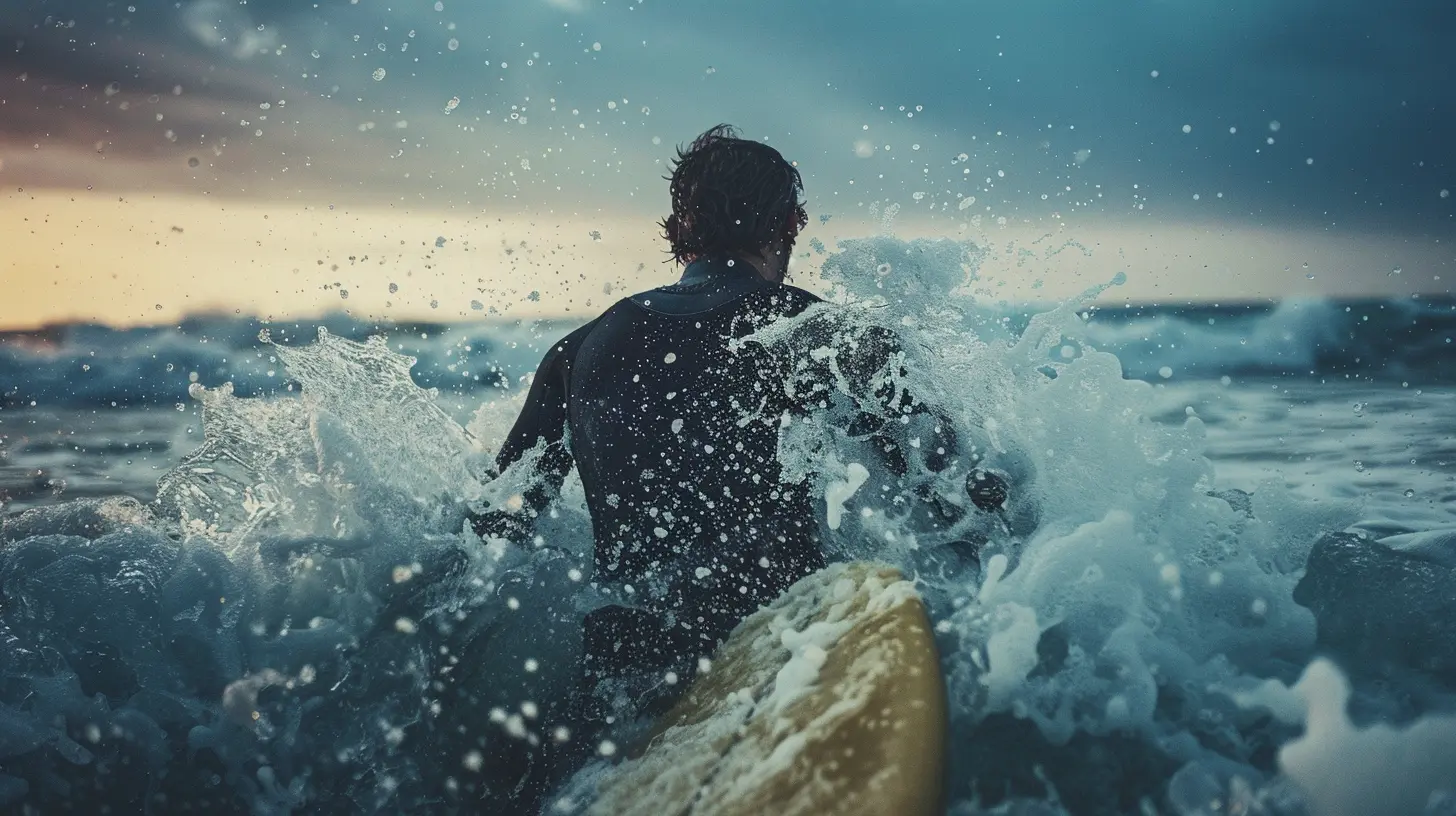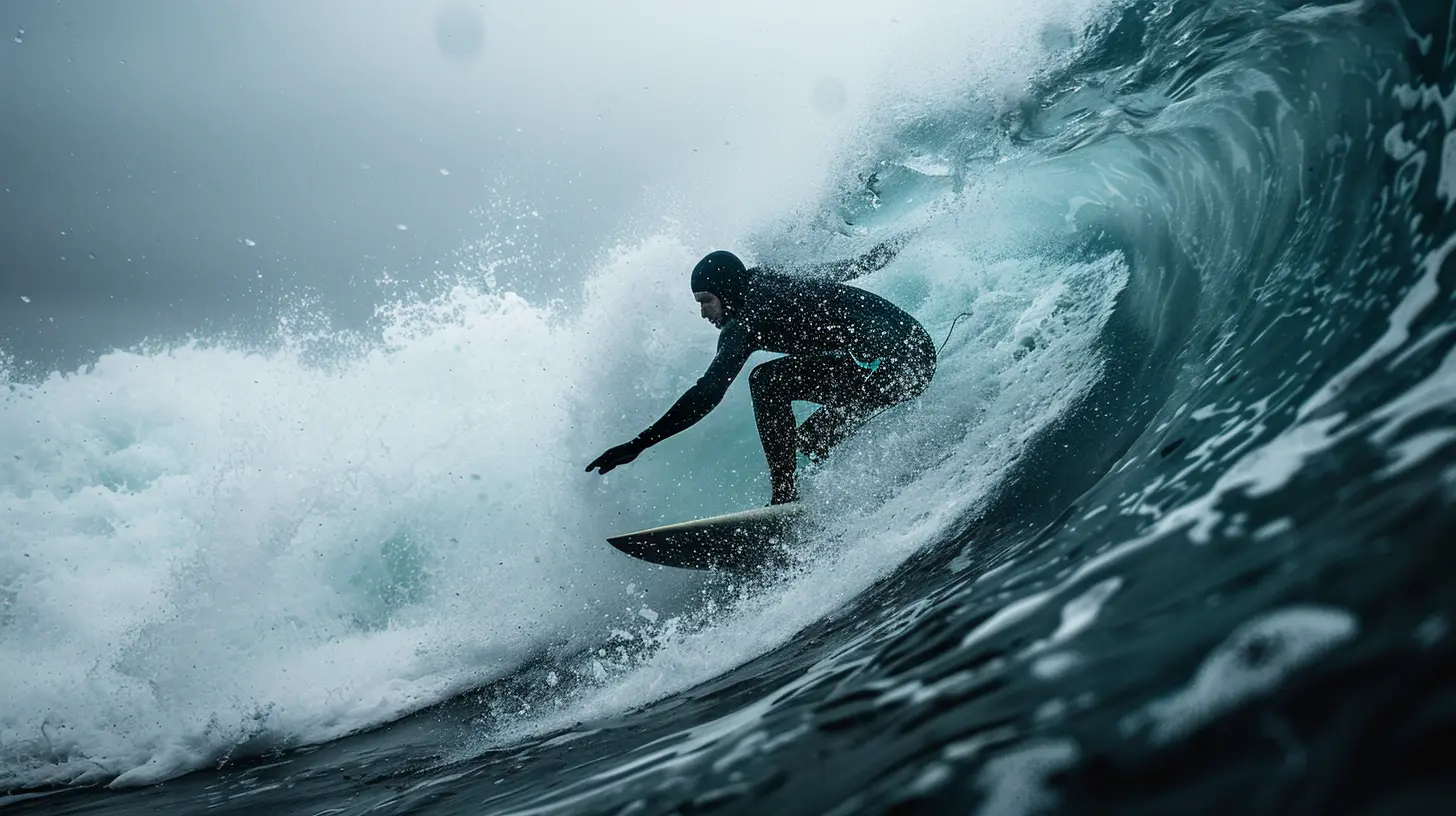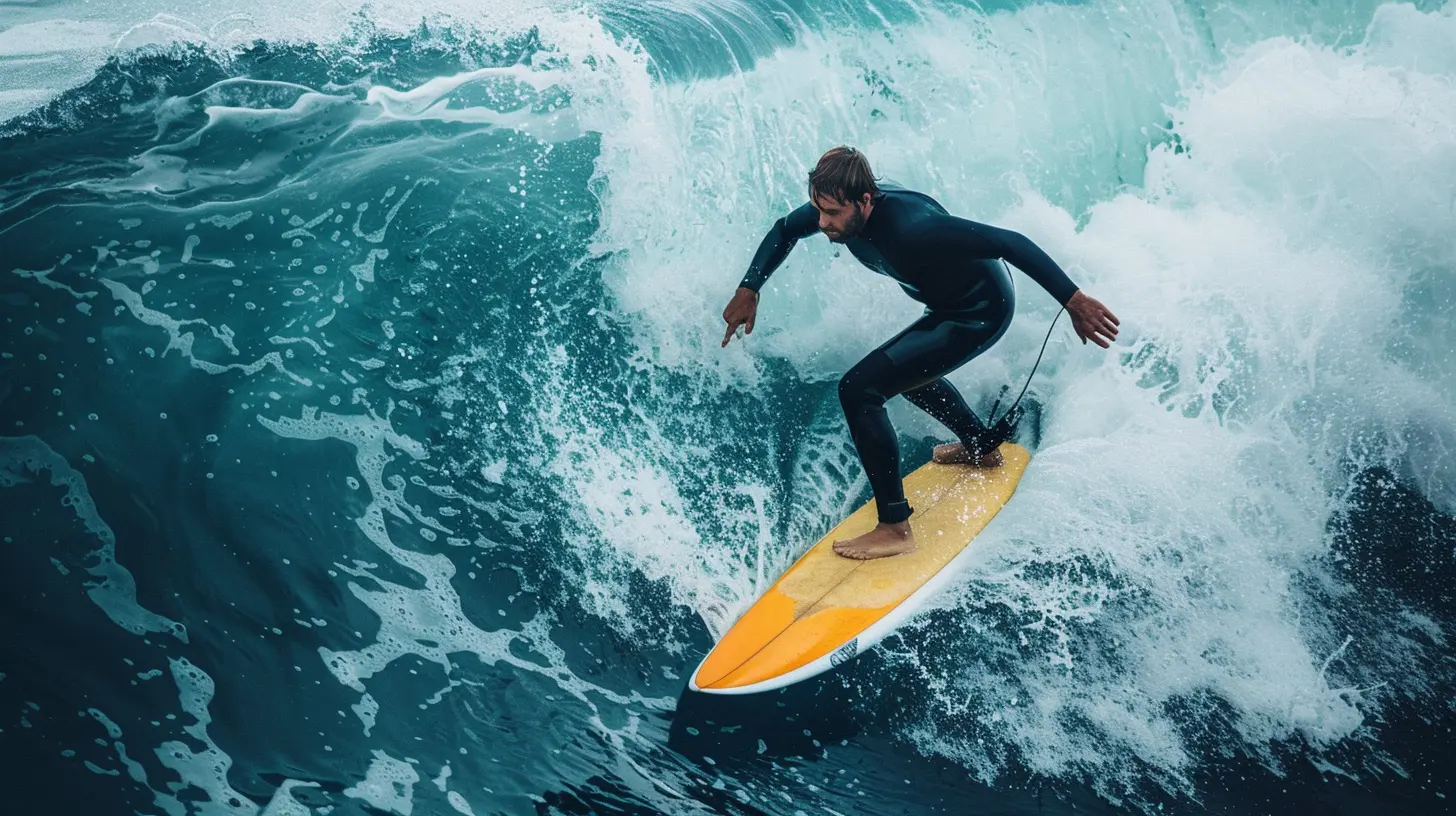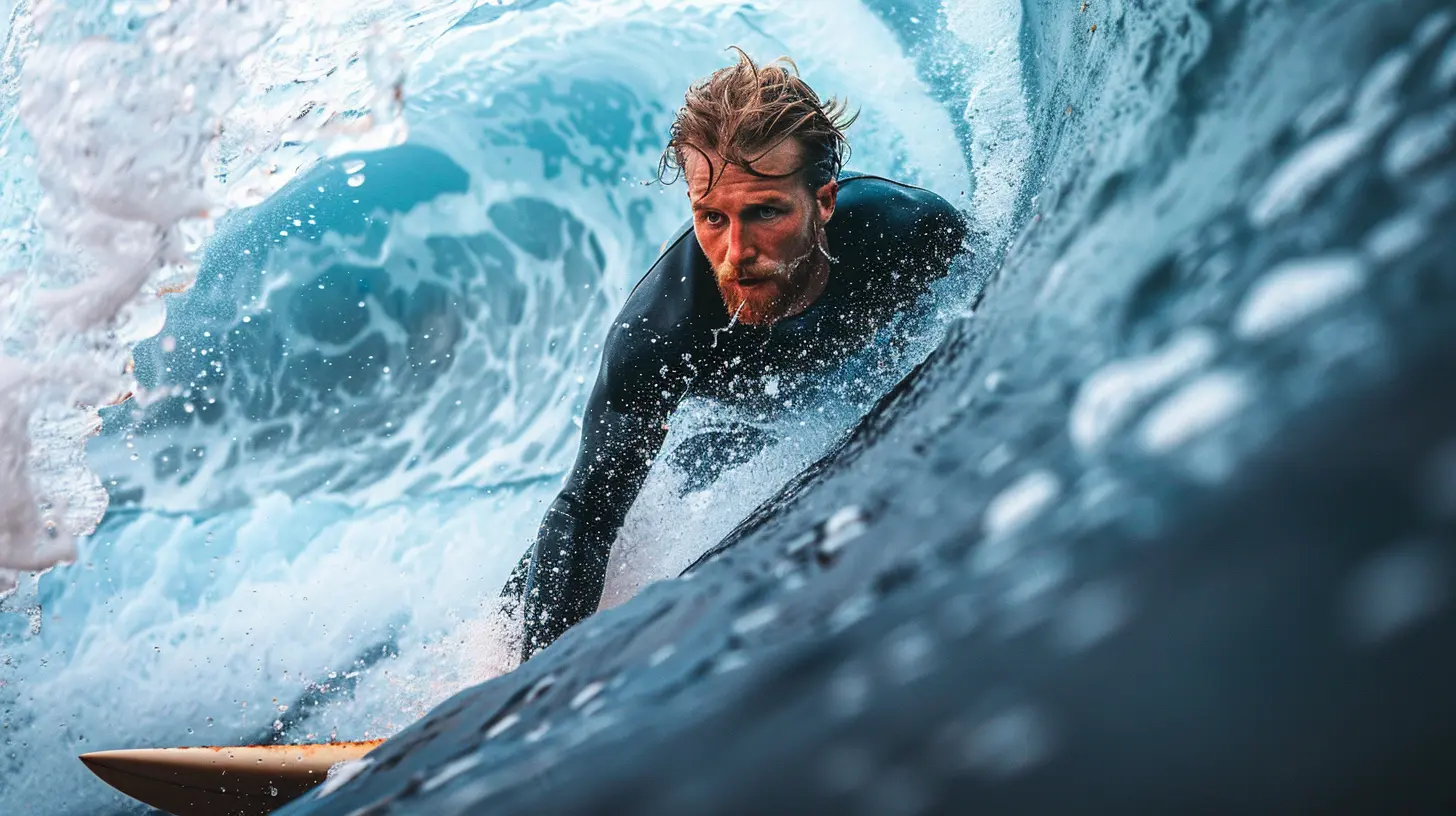16 March 2025
Surfing is often associated with sunny beaches, warm waters, and tropical vibes. But for the more adventurous spirits, cold-water surfing offers a unique thrill. Whether you're paddling out into the crisp Atlantic off the coast of Ireland or braving the icy waters of Alaska, cold-water surfing provides both a challenge and an opportunity to connect with nature in a way that’s raw and exhilarating.
However, surfing in cold water isn't for the faint-hearted. It requires more than just the standard surfboard, wetsuit, and good vibes. You need to be prepared — both mentally and physically — to stay warm and safe. So, if you're ready to take the plunge into chillier tides, let's dive into some practical tips for surfing in cold water.

Why Surfing in Cold Water Is Worth It
Before jumping into the nitty-gritty, you might be wondering: why even bother with cold-water surfing? What’s the allure?Cold-water surfing offers a different kind of solitude. Unlike popular warm-water surf spots that are often crowded, cold-water destinations tend to be more remote, allowing you to have the waves to yourself. There's something undeniably peaceful about catching waves with the backdrop of snow-capped mountains or rugged coastlines.
Plus, cold-water waves are often underrated. While warmer climates tend to get all the attention, some of the world’s best surf breaks are actually in cooler waters.
But let’s be real: cold-water surfing isn't just about aesthetics. It’s about preparation, endurance, and a little bit of grit. So, how do you stay warm and safe while getting the most out of your session?

1. Layering is Key: Choosing the Right Wetsuit
The single most important piece of gear when surfing in cold water is your wetsuit. A standard wetsuit won’t cut it when you’re dealing with icy waves — you need something thicker and more protective.Wetsuit Thickness
Wetsuit thickness is measured in millimeters (mm), and the thicker the wetsuit, the warmer it will keep you. For cold water (anywhere between 50°F and 60°F or 10°C to 15°C), you’ll want a wetsuit that’s at least 4/3mm. If you’re surfing in temperatures below 50°F (10°C), a 5/4mm or even a 6/5mm wetsuit is essential.The first number refers to the thickness of the wetsuit around the chest and back, while the second number refers to the thickness around the arms and legs. This is because you need more flexibility in your limbs to paddle effectively but more warmth around your core.
Sealed Seams
When picking a wetsuit for cold-water surfing, look for one with glued and blind-stitched seams. These types of seams prevent water from seeping into the suit, keeping you warmer for longer. Additionally, tape-sealed seams or liquid-taped seams offer even better water resistance.Wetsuit Fit
A poorly fitting wetsuit is your worst enemy in cold water. If your wetsuit is too loose, water will flush in, making you colder. If it’s too tight, you’ll have restricted movement, which will make paddling more difficult. It’s crucial to find a wetsuit that fits snugly but comfortably.
2. Don’t Forget Your Accessories
Even with a high-quality wetsuit, there are still parts of your body that are exposed to the cold. Cold-water surfers swear by a few key accessories to keep their extremities warm.Hood
Your head is one of the first places where you’ll feel the cold. A neoprene hood is essential to protect your head, neck, and ears from the icy water. Many cold-water wetsuits come with an attached hood, but if yours doesn’t, you can buy one separately. Opt for a hood that’s at least 3mm thick to provide adequate warmth.Booties
Your feet are another vulnerable spot when you’re out in cold water. Neoprene booties (usually 3mm to 7mm thick) are designed to keep your feet warm while providing some grip on your board. Look for booties with split toes for better control and balance. Trust me, numb toes are no fun when you’re trying to pop up on your surfboard.Gloves
Cold hands make it tough to paddle and grip your board. Neoprene gloves (3mm to 7mm thick) are just as important as booties. Look for gloves that provide good dexterity while keeping your fingers warm. Some surfers prefer mittens because they offer better insulation, but they sacrifice dexterity. It’s a trade-off, so choose what works best for you.
3. Warm Up Before You Get Wet
Let’s be honest, taking the first plunge into cold water can be a shock to the system. One way to minimize that initial chill is by warming up before getting in the water. A quick jog or some dynamic stretching can raise your body temperature and get your blood flowing. You’re not just warming up your muscles; you’re preparing your body for the cold shock of the water.Another tip? Pouring warm (not hot) water into your wetsuit before you get in can help ease that icy plunge. Just make sure the water isn’t too hot, as it could damage the suit or hurt your skin.
4. Stay Hydrated and Fueled
Surfing in cold water takes a lot more energy than you might think. Your body is working overtime to maintain its core temperature, which can make you feel fatigued faster than surfing in warmer conditions. Staying hydrated is crucial, even though you might not feel as thirsty in cold weather.It’s also important to fuel up. Eating a high-energy snack like a banana or energy bar before your session can give your body the fuel it needs to power through the cold. Post-surf, make sure you have something warm to eat or drink to help restore your energy levels and warm you from the inside out.
5. Know the Signs of Hypothermia
Staying warm isn’t just about comfort; it’s also about safety. Hypothermia is a real risk when surfing in cold water. This occurs when your body loses heat faster than it can produce it, causing your core temperature to drop. Early symptoms of hypothermia include shivering, numbness, and confusion.If you start to feel disoriented or excessively tired, it’s time to call it a day. Listen to your body, and don’t push yourself too hard. It’s better to exit the water early than to risk your health.
6. Keep Moving In the Water
Staying active while surfing in cold water is crucial to keeping warm. The more you paddle and move, the more your muscles work to generate heat. Try to avoid sitting still in the lineup for too long, as this can cause your body temperature to drop. If you’re waiting for waves, keep your blood flowing by gently paddling or moving your arms and legs.7. Have a Post-Surf Warm-Up Routine
Once you’re out of the water, the cold doesn’t stop. Your body will continue to lose heat, especially if you’re wet. To avoid post-surf chills (or worse, hypothermia), it’s essential to have a solid warm-up routine.Dry Off Quickly
As soon as you’re out of the water, strip out of your wetsuit and dry off with a towel. The longer you stay in wet clothes, the faster your body will lose heat. Bring a large, absorbent towel and a dry robe or poncho to shield yourself from the wind as you change.Layer Up
Once you're dry, put on warm, dry layers immediately. A thermal base layer, a hoodie, and a down jacket are great options. Don’t forget to cover your head with a beanie, and wear warm socks and boots to protect your feet. The goal is to trap heat and prevent your body from cooling down too quickly.Drink Something Warm
A hot drink can work wonders after a cold surf session. Tea, coffee, hot chocolate — whatever your preference, sipping something warm will help raise your core temperature and make you feel more comfortable. Some surfers even bring insulated thermoses to the beach for that immediate post-surf warmth.8. Respect the Ocean and Know Your Limits
Cold-water surfing can be more challenging than warm-water surfing for a variety of reasons: fewer daylight hours, bigger swells, and harsher conditions. Always prioritize safety. Check the weather forecast, the swell size, and the tide before heading out. If you’re unfamiliar with a spot, talk to local surfers to get insights on conditions and hazards.Additionally, always surf with a buddy or let someone know when and where you’ll be surfing. Cold water can tire you out faster, so it’s crucial to have someone looking out for you in case of emergency.
Conclusion: Embrace the Cold
Surfing in cold water is an experience unlike any other. It’s raw, challenging, and incredibly rewarding. With the right preparation and gear, you can not only survive but thrive in chilly waters. From investing in a high-quality wetsuit to knowing the signs of hypothermia, these tips will help you stay warm and safe as you embrace the cold-water surf adventure.So, next time you’re staring at a frosty lineup, don’t hesitate. Suit up, paddle out, and let the cold water invigorate your surfing spirit. After all, some of the best waves are waiting in the most unexpected (and chilly) places!









Dominique Spencer
Great tips! Staying warm is crucial for enjoying cold water surfing safely. Thanks for sharing!
April 3, 2025 at 4:50 AM